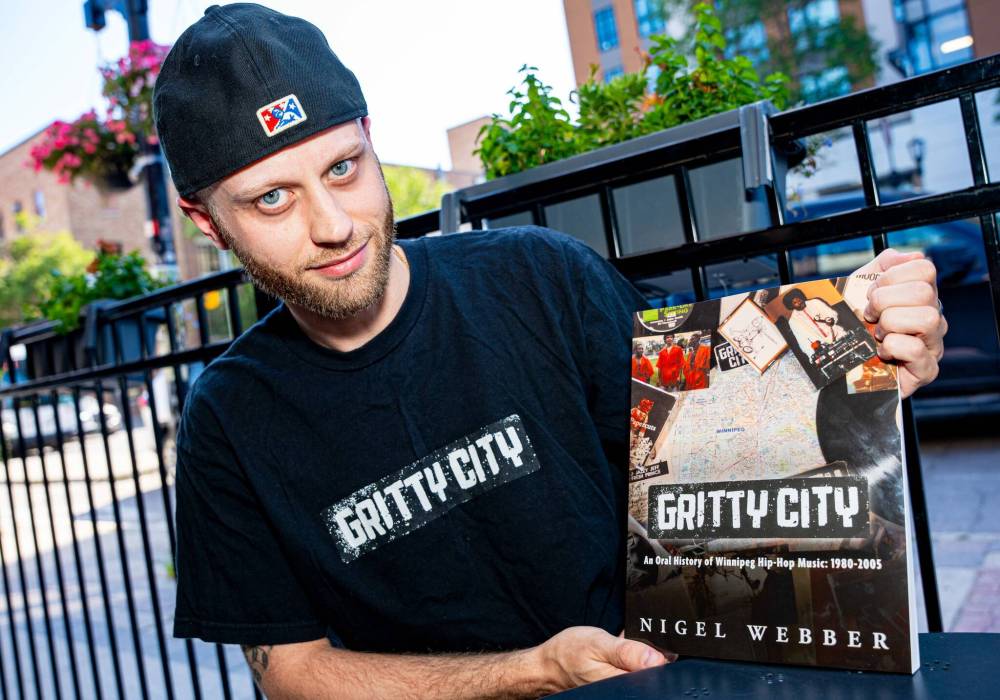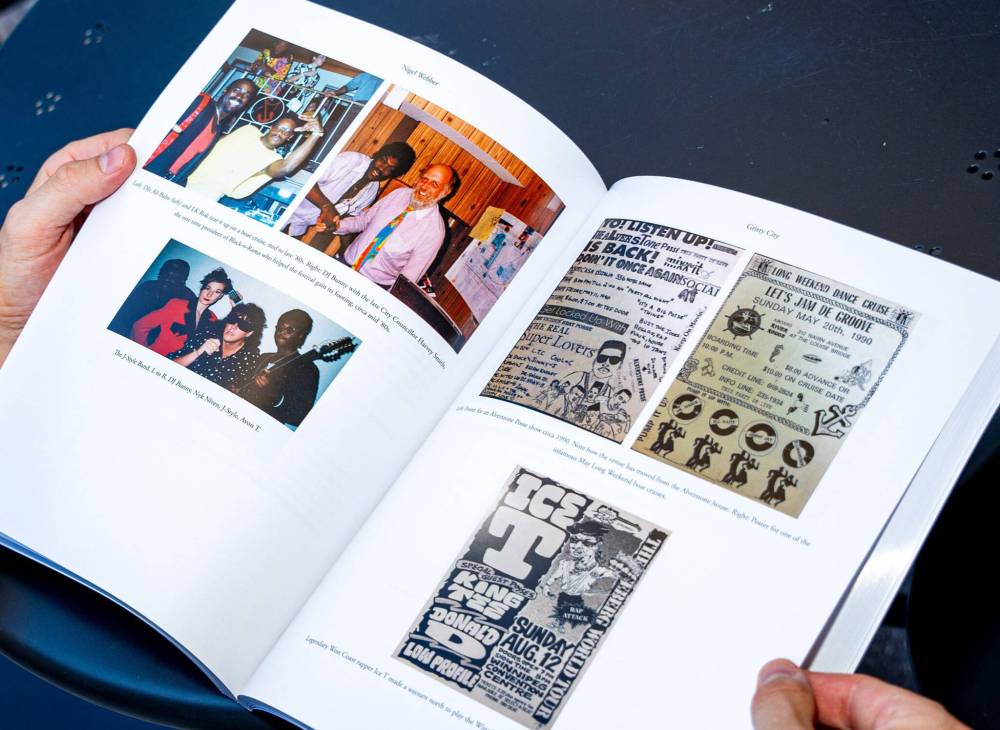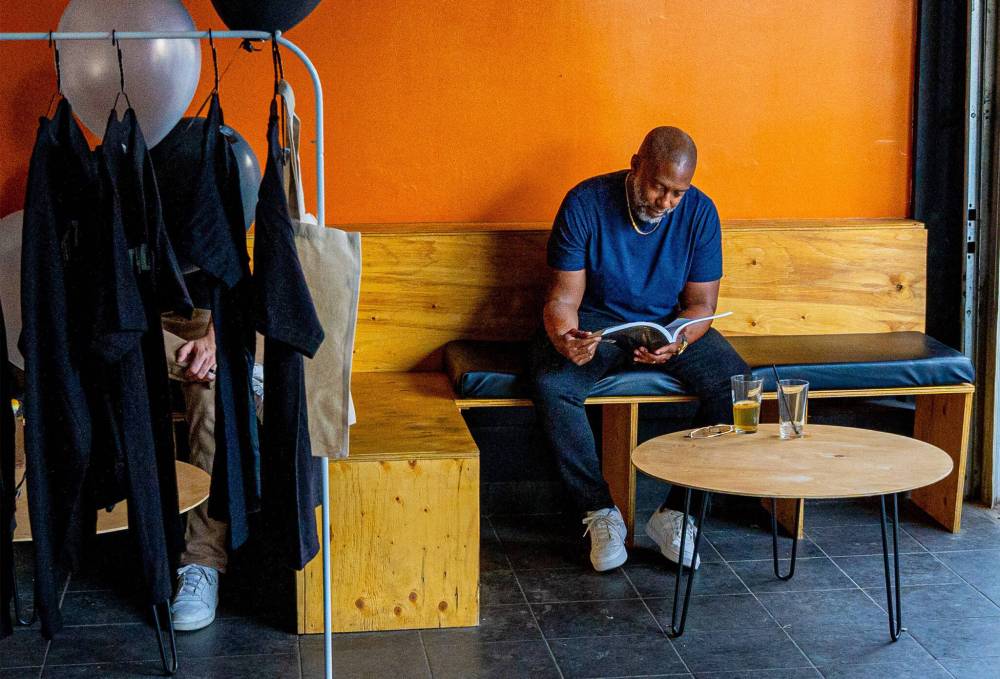Word of mouth
Gritty City cements Winnipeg’s place in the history of hip hop
Advertisement
Read this article for free:
or
Already have an account? Log in here »
To continue reading, please subscribe:
Monthly Digital Subscription
$0 for the first 4 weeks*
- Enjoy unlimited reading on winnipegfreepress.com
- Read the E-Edition, our digital replica newspaper
- Access News Break, our award-winning app
- Play interactive puzzles
*No charge for 4 weeks then price increases to the regular rate of $19.00 plus GST every four weeks. Offer available to new and qualified returning subscribers only. Cancel any time.
Monthly Digital Subscription
$4.75/week*
- Enjoy unlimited reading on winnipegfreepress.com
- Read the E-Edition, our digital replica newspaper
- Access News Break, our award-winning app
- Play interactive puzzles
*Billed as $19 plus GST every four weeks. Cancel any time.
To continue reading, please subscribe:
Add Free Press access to your Brandon Sun subscription for only an additional
$1 for the first 4 weeks*
*Your next subscription payment will increase by $1.00 and you will be charged $16.99 plus GST for four weeks. After four weeks, your payment will increase to $23.99 plus GST every four weeks.
Read unlimited articles for free today:
or
Already have an account? Log in here »
Hey there, time traveller!
This article was published 06/08/2024 (473 days ago), so information in it may no longer be current.
Seven months before the Fresh Prince pulled up in a cab to a Bel-Air mansion in the pilot episode of his NBC sitcom, Will Smith and DJ Jazzy Jeff made their way through downtown Winnipeg to perform at the Convention Centre.
“I’ll give you the exact date,” says Nigel Webber. “February 9, 1990. It was a critical moment because it was the first time a major American hip-hop act came to the city.”
Depending on your source, anywhere between 3,000 and 5,000 fans — including local rappers Gruf, Odario and Berris Smith — showed up to rap along to such deep cuts as A Touch of Jazz and chart-toppers like Parents Just Don’t Understand.

NIC ADAM / FREE PRESS
Nigel Webber interviewed more than 120 important figures in Winnipeg hip-hop history for Gritty City.
Webber remembers the concert well — even though he wasn’t born until October of that year.
How? For the last four years, the 33-year-old has been calling up as many local DJs, promoters, dancers and rappers as possible in an attempt to make up for his inability to time travel, spending hundreds of hours interviewing, transcribing, compiling and clarifying the rough draft of local hip-hop history into a self-published, 239-page oral history called Gritty City.
The book, which Webber released last week, covers 1980 to 2005, a period of rapid expansion for the genre and the culture in the city, featuring an overview of pioneering artists such as DJ Bunny, the Too Def Crew, Hard Edge Posse and Brandon’s Farm Fresh crowd in their own words.
A graduate of the University of Winnipeg with a background in film, Webber leveraged his obsession with archival materials to develop the book, an impressive attempt at documenting several eras of musical history he didn’t want to lose.
“I didn’t witness or take part in any of these events,” says Webber, an avid consumer of oral history and a longtime contributor to Stylus, the program guide/music magazine at campus/community station CKUW 95.9 FM.
“My favourite book I read this year was about the assassination of Martin Luther King, Jr., and the ensuing manhunt. The difference for something like that is there’s a treasure trove of hard documents. Here, a lot of people have never told these stories before. When I reached out to some people, they were often happy to tell them. Some had been waiting 20 years for someone to knock on their door. This book becomes in a sense a primary source document.”
Webber admits he can’t sing a note; he hasn’t even worked in a music store.
“I’ve just been fascinated by music and music history, and I have the kind of brain that can retain a lot of that information,” he says.

SUPPLIED
Gritty City is an oral history of the hip-hop genre in the city that spans 1980 through 2005.
Growing up in the West End, Webber was mostly interested in the music his father had laying around the house.
“I was probably about six or seven when I first pulled Iggy Pop’s 1990 album Brick by Brick off the shelf,” he writes in his introduction. He moved on to rock acts such as the Minutemen, the Jesus Lizard and the Gun Club, all the while hearing dribs and drabs of rap music via mainstream radio airwaves.
But on his 17th birthday, Webber’s friend Charlie Hyde slipped him a mixtape featuring artists such as Common Sense, Black Moon and Capone and Noreaga. It was a gift that sent Webber down hip-hop rabbit holes, slinking past mega-hits such as 50 Cent’s In Da Club toward music that could only be discovered by word-of-mouth and shared by listeners with an ear to the underground.
Soon, he went travelling and asked Hyde to load up his 120-gigabyte iPod Classic.
“The first local album that got me was John Smith’s Pinky’s Laundromat,” he says.
The album, released by Peanuts and Corn Records in 2004, is a gritty, local time capsule named after a real Arlington Street business.
“The reason why I listened a second time was that he started calling out Winnipeg street names,” recalls Webber.
Just as KRS-One shouted out the South Bronx, Smith shouted out Slaw Rebchuk. Webber felt seen by what he heard.

NIC ADAM / FREE PRESS
Webber leveraged his obsession with archival materials to develop the book.
He delved deeper, seeking out the work of Manitoba-based artists such as Birdapres, Pip Skid, Rob Crooks, Nestor Wynrush, Sleeping Giants (Brendan Grey and Nereo), Yy and Magnum KI, the duo of former CBC Manitoba host Ismaila Alfa and Thunder Bay’s DJ Kutdown. Webber started attending shows at the Pyramid or the Lo Pub.
In 2019, he happened upon a Facebook post by DJ Bunny about Gerry Atwell — best known as an arts administrator, activist and musician with groups such as Eagle and Hawk.
“Bunny called him the first rapper in Winnipeg,” recalls Webber, who was disheartened that he never got to interview the late Atwell, who had just died, about that part of his career.
Inspired by other oral history projects — including Winnipeg writer Sheldon Birnie’s underground rock book Missing Like Teeth, American authors Jim Fricke and Charlie Ahearn’s Yes Yes Y’all about the birth of hip hop, and Ontario rapper Shad’s documentary series Hip-Hop Evolution — Webber connected with other builders in the scene who were eager to put the needle on the record.
Over the phone, Webber nabbed interviews with proprietors of venues Club Soda and the LimeTree Cabaret, promoters including Nick Cumberbatch and Heather Watson and radio hosts such as CKUW’s Chubby D and Flava 107.9’s Dr. Shock, Chris Knight and Barry Brown.
There are also still-active rappers, including Brendan Grey, Len Bowen and Hellnback, who form a link from the book’s end to the present era.
To Webber, the Gritty City project presented an opportunity to right a few historical wrongs in Winnipeg.
“Local punk, jazz, rock, folk — all that stuff has been well-covered. I think it’s important that these people (in this book) are not only acknowledged, but celebrated,” he says.

NIC ADAM / FREE PRESS
Jason Pinder, a member of early 1990s groups Bonafide and State of Mind, says the book is like a nostalgia trip.
At a launch event Aug. 1 at the Handsome Daughter, Webber greeted family, friends and interviewees as he handed out copies of the book, which represented four years of work and about 16 years of fandom.
“I think it’s very dope,” said Jason Pinder, a high school English teacher who was a member of early 1990s groups Bonafide and State of Mind.
“I’m grateful that Nigel took the time and had the dedication to put this together because guys like me who were in the scene, we never thought of writing this stuff down.”
ben.waldman@winnipegfreepress.com

Ben Waldman is a National Newspaper Award-nominated reporter on the Arts & Life desk at the Free Press. Born and raised in Winnipeg, Ben completed three internships with the Free Press while earning his degree at Ryerson University’s (now Toronto Metropolitan University’s) School of Journalism before joining the newsroom full-time in 2019. Read more about Ben.
Every piece of reporting Ben produces is reviewed by an editing team before it is posted online or published in print — part of the Free Press‘s tradition, since 1872, of producing reliable independent journalism. Read more about Free Press’s history and mandate, and learn how our newsroom operates.
Our newsroom depends on a growing audience of readers to power our journalism. If you are not a paid reader, please consider becoming a subscriber.
Our newsroom depends on its audience of readers to power our journalism. Thank you for your support.


